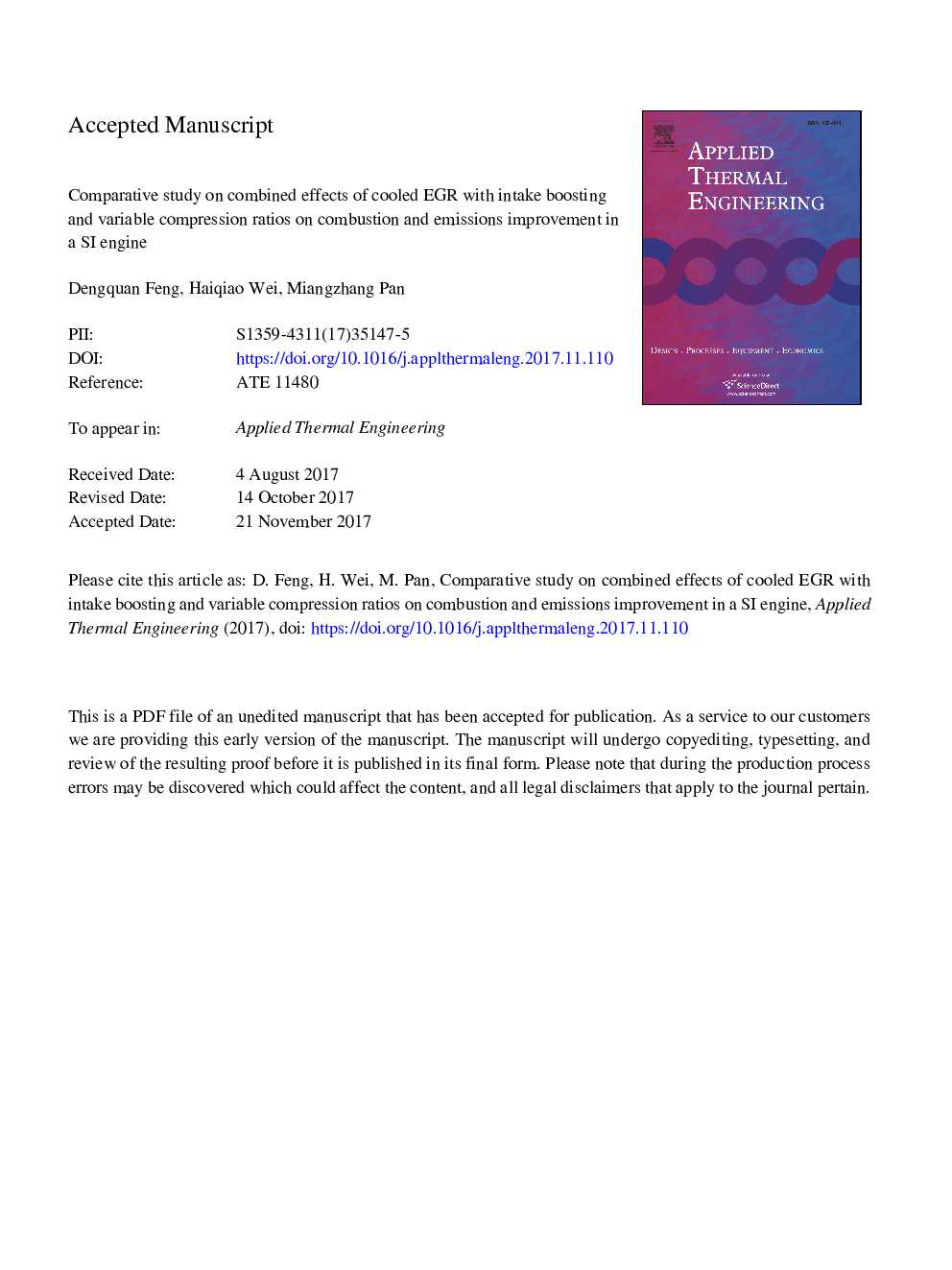| Article ID | Journal | Published Year | Pages | File Type |
|---|---|---|---|---|
| 7046170 | Applied Thermal Engineering | 2018 | 42 Pages |
Abstract
Effects of increasing compression ratio (CR) and intake boosting when operating engine with cooled EGR are characterized and compared in a single cylinder, port-fuel injection SI engine. CR and intake pressure is independently increased form 8:1 to 10:1, and 1.0 to 1.4â¯bar when operating EGR from 0% to 20%. Experiments are performed at constant speed 1200â¯r/min, full load and stoichiometric air fuel ratio. As increase of EGR, the MBT (minimum ignition advance for best torque) spark timing has to be advanced to compensate retarded combustion phasing caused by the cooling effect of EGR. Increasing intake pressure to 1.4â¯bar gains more restore in maximum cylinder pressure and peak heat release rate compared with those by increasing CR to 10:1. At full load, increase of EGR produces a significant drop in IMEP. Increasing intake pressure and CR can both effectively restore egnine IMEP while achieving a reduction in ISFC (indicated specific fuel consumption) and COVIMEP (coefficient of cyclic variation of IMEP). Increase of CR and intake pressure also alleviates the deterioration in HC emissions, where the decrease of HC is up to 34% at 20% EGR. However, slightly higher NOX is produced at higher CR and intake pressure.
Related Topics
Physical Sciences and Engineering
Chemical Engineering
Fluid Flow and Transfer Processes
Authors
Dengquan Feng, Haiqiao Wei, Mingzhang Pan,
